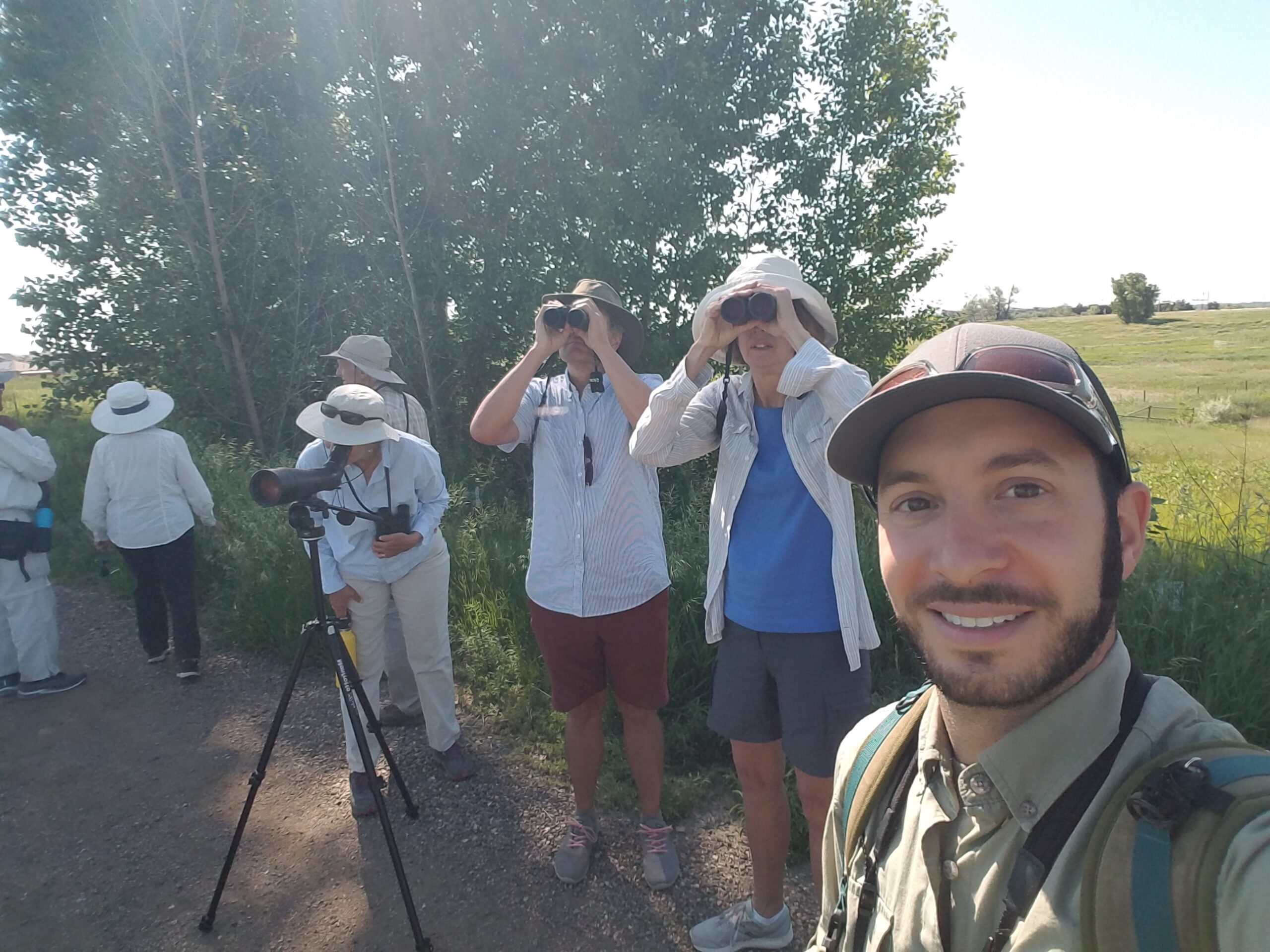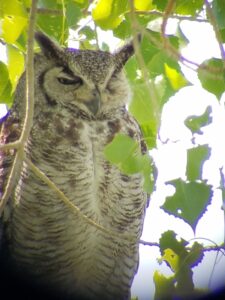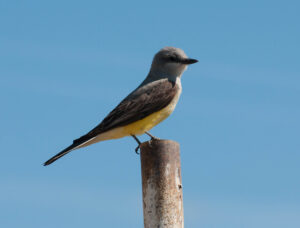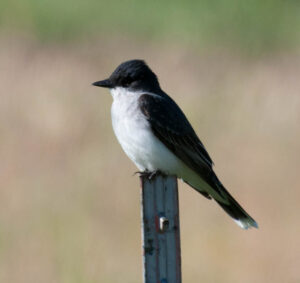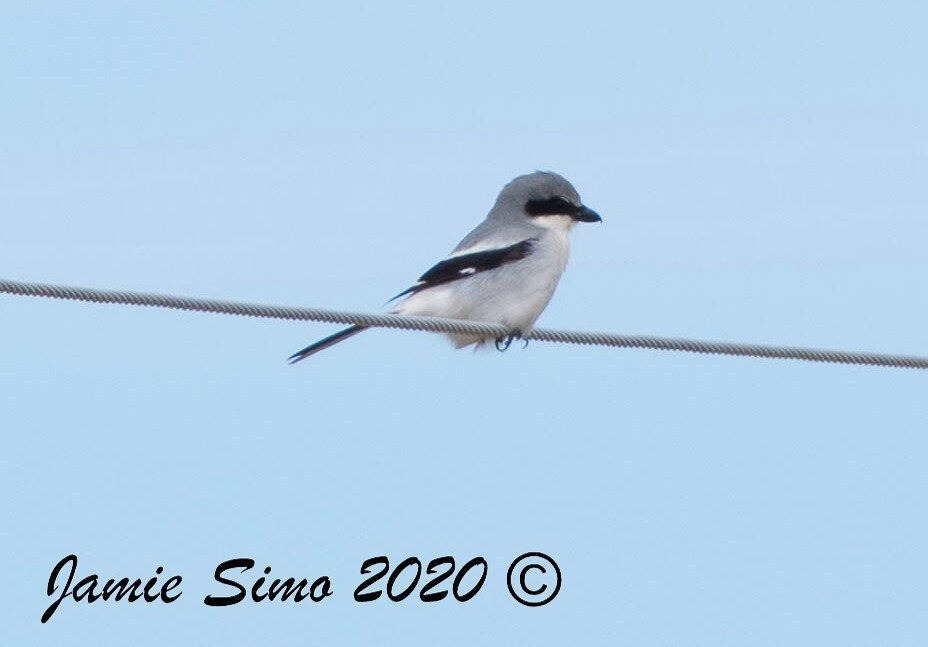
As it says on the tin, the Lagerman Reservoir Open Sky Loop is almost completely open and without shade so it was a blessing that the morning of our walk was cloudy and relatively cool for August. It’s still a long walk though, and my hat’s off to those doughty birders who stuck it out with me.
August is a challenging time to bird as birds are generally no longer singing and migration hasn’t really hit its peak yet. Still, we had some great birds, including a female Lark Bunting almost as soon as we started our walk. Colorado’s state bird, the Lark Bunting is a large, grassland sparrow. While the male in breeding plumage is unmistakable, being mostly black with a prominent white wing patch, the female and juvenile are more subtle with brown streaking. They do have a particularly chunky bill for a sparrow, almost more like a finch, but the creamy wing patch is a dead giveaway and was what clued us in to the bird’s identity.
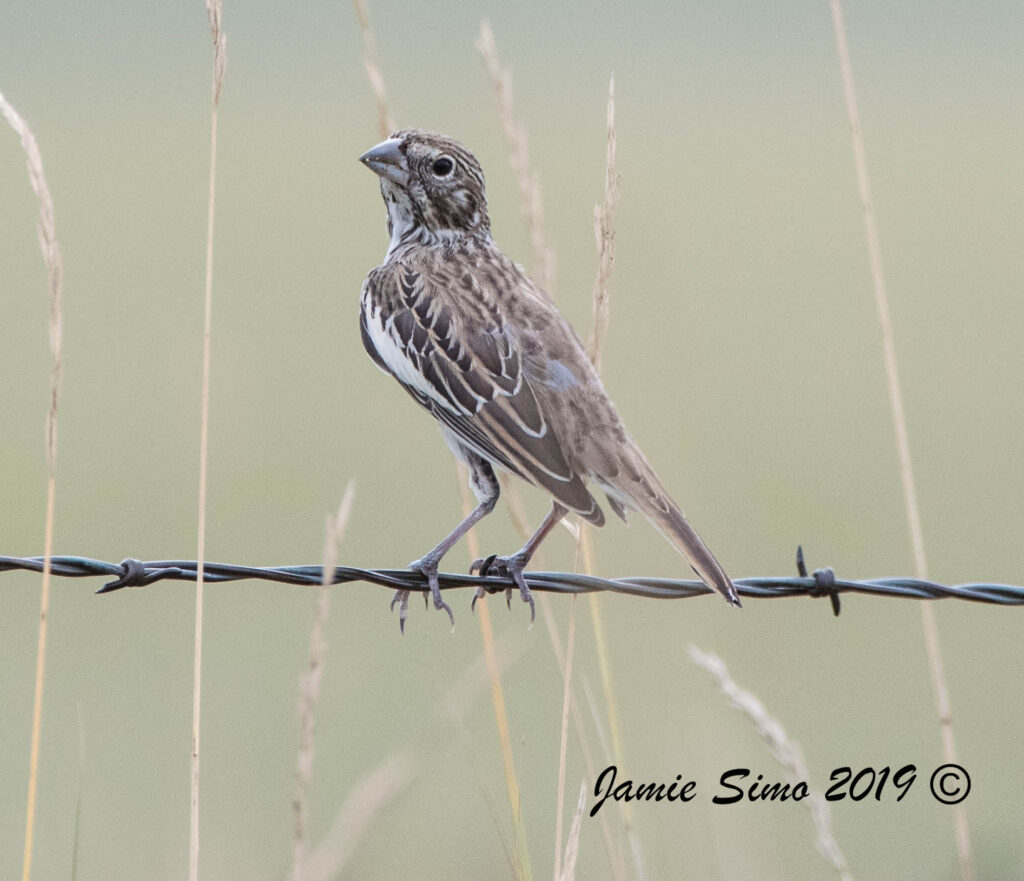
Buoyed by our first big find, we continued on and had some fantastic views of Say’s Phoebes, which appeared to be everywhere. Say’s Phoebes are a kind of flycatcher and, as is typical of phoebes, are known for bobbing their tails. A trip highlight was watching an adult Say’s Phoebe feed a juvenile. One way to tell a juvenile from an adult bird is the very visible fleshy “gape” around the base of the bill. When altricial birds are nestlings, a prominent gape allows their parents to locate where to put the food. On Say’s Phoebes this gape is an orangey-yellow color, which stands out against the dark beak and grey head feathers.
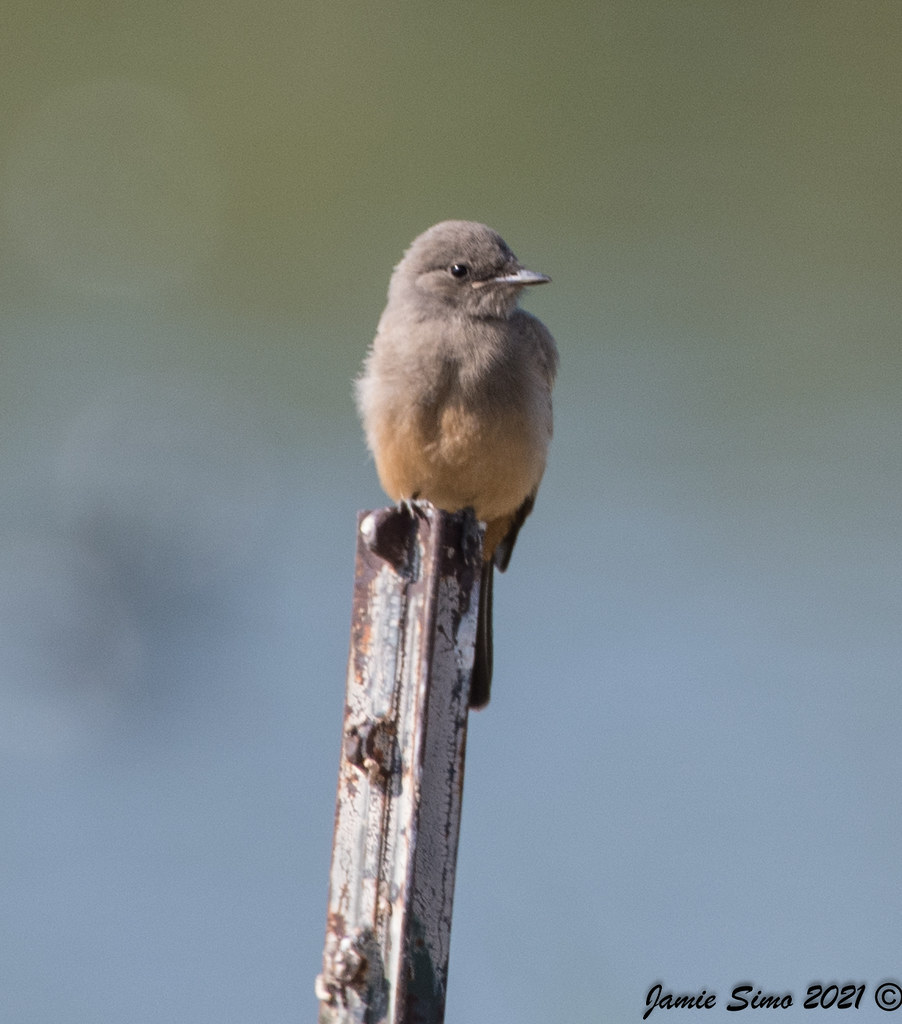
Another highlight of the trip was seeing a Loggerhead Shrike. Although the bird never came close to us, we were able to scope it with the Swarovski ATS 65mm spotting scope, which allowed us to get great looks at it. Although shrikes are considered songbirds, they hunt and kill not only insects, but also rodents, lizards, and even other songbirds. To kill vertebrate prey, they use their hooked beaks to deliver a paralyzing bite to the back of the neck then shake their victim with enough force to break its neck. Because they lack talons like a raptor, they impale their kill on thorns or even barbed wire to help hold it steady to eat or even to cache it for later.
Some other cool sights we had were two Great Horned Owls in a barn, a Bald Eagle with prey, and a Sage Thrasher. In all, we had 41 species, which is incredible for August in the grassland. Hopefully you can join us on our next walk!
Lagerman Agricultural Preserve–Open Sky Loop, Boulder, Colorado, US
Aug 12, 2023 7:43 AM – 12:03 PM
7.07 mile(s)
41 species
Canada Goose 65
Mallard 11
Lesser Scaup 2
Rock Pigeon (Feral Pigeon) 1
Eurasian Collared-Dove 9
Mourning Dove 1
Broad-tailed Hummingbird 1
Killdeer 2
Ring-billed Gull 1
Double-crested Cormorant 5
Great Blue Heron 3
Black-crowned Night-Heron 1
Turkey Vulture 1
Bald Eagle 2
Red-tailed Hawk 3
Great Horned Owl 3
Downy Woodpecker 1
American Kestrel 1
Western Wood-Pewee 2
Say’s Phoebe 11
Western Kingbird 1
Eastern Kingbird 3
Loggerhead Shrike 1
Blue Jay 1
Black-billed Magpie 4
Black-capped Chickadee 1
Tree Swallow 1
Barn Swallow 11
European Starling 38
Sage Thrasher 1
House Sparrow 3
House Finch 5
Lesser Goldfinch 3
American Goldfinch 3
Lark Bunting 1
Savannah Sparrow 2
Western Meadowlark 8
Red-winged Blackbird 32
Brewer’s Blackbird 1
Common Grackle 7
Blue Grosbeak 3


